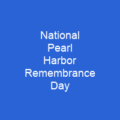The Mahan-Class Destroyers: A Pivotal Chapter in U.S. Naval History
Imagine a fleet of ships, each one a testament to innovation and resilience, sailing through the tumultuous waters of World War II. These were the Mahan-class destroyers, 18 mighty vessels that played a crucial role in shaping naval warfare during the mid-20th century.
Design and Evolution
The design of the Mahan-class emerged as an improved version of the Farragut class, incorporating up-to-date machinery and a new engineering plant. The compromise included dual-purpose guns, quadruple torpedo tubes, and a new steam propulsion system with lightweight turbines. These ships had a distinctive silhouette with a tripod foremast and pole mainmast, and were fitted with gun crew shelters and emergency generators.
Performance and Capabilities
The Mahan-class destroyers were capable of performing various tasks including bombardment, amphibious landings, task force screening, convoy duty, and anti-aircraft and submarine warfare. The class displaced 1,524 t at standard load and 1,753 t at deep load. Overall length: 341 feet 3 inches. Beam: 35 feet 6 inches. Draft: 10 feet 7 inches. Powered by General Electric geared steam turbines with four Babcock & Wilcox or Foster Wheeler boilers. Maximum speed: 37 knots. Range: 12,850 km at 12 knots. Peacetime complement: 158; wartime: 250.
Engineering Improvements
Engineering improvements included raised steam pressure and temperature, double reduction gearing, and cruising turbines. Boiler economizers improved fuel economy. The ships’ range was extended to 6,940 nautical miles at 12 knots. Design shaft horsepower increased from 42,800 shp to 48,000 shp.
Armament and Modifications
The as-built armament consisted of five dual purpose 5-inch guns, four water-cooled .50 caliber machine guns, and three quadruple torpedo tube mounts for twelve 21-inch tubes. The Mahan-class destroyers underwent various wartime modifications, including the removal and replacement of gun mounts, addition of Bofors 40mm guns and Oerlikon 20mm guns, and the installation of quads and twins on some ships.
Notable Ships
USS Mahan (DD-364): Commissioned in September 1936, served in the Atlantic and Southern California areas before being stationed at Pearl Harbor. Participated in initial post-attack efforts after Pearl Harbor’s attack on December 7, 1941.
USS Cummings (DD-365): Served in the Pacific Fleet in the late 1930s, participating in training exercises and security patrols off the west coast. Went on a goodwill visit to several ports in the South Pacific before suffering casualties during the Japanese attack on Pearl Harbor.
USS Drayton (DD-368): Made her shakedown cruise to Europe late in 1936, searched for Amelia Earhart in July 1937, and escorted convoys and screened carriers in various locations around the world. Participated in the Battle of Tassafaronga in November 1942.
USS Lamson (DD-367): Struck by a kamikaze that set fire to the ship, killing 21 men and injuring 50 during an amphibious landing at Ormoc Bay in December 1944. USS Flusser: Participated in various convoy duties, search operations, and escort duties between Pearl Harbor and the southwest Pacific ports from 1937 to 1943.
USS Reid (DD-366): Came into naval service in November 1936. From 1937 until 1941, she participated in training and fleet maneuvers in the Atlantic and Pacific. Escaped without damage while her gunners fired at the enemy attackers during the Japanese attack on Pearl Harbor.
USS Case (DD-370): Began active duty in September 1936 and was assigned to the Pacific Fleet. Participated in fleet exercises and supported convoys between Pearl Harbor and the west coast until the Japanese attack on December 7, 1941.
USS Conyngham (DD-385): Made her maiden voyage in early 1937 and operated along the west coast and Hawaiian Islands until April 1940. Participated in several battles and operations, including the Battle of the Santa Cruz Islands, the landing at Guadalcanal, and the landings at Lae and Finschhafen, New Guinea.
USS Cassin (DD-367): Began naval service in August 1936 but was kept from sea duty until March 1937. The ship was rebuilt and commissioned again in February 1944. Took part in several battles and operations, including the shelling of Marcus Island, the bombardment of Iwo Jima, and guarding the air evacuation of released prisoners of war from Japan.
USS Shaw (DD-365): Crossed the Atlantic on her shakedown cruise in April 1937 and conducted training exercises in the Atlantic. Sustained severe damage during the attack but made temporary repairs at Pearl Harbor.
USS Tucker (DD-374): Commissioned in July 1936 and joined the destroyer forces attached to the US Battle Fleet based in San Diego, California. Participated in a naval exercise in the Caribbean in February 1939 and operated between the west coast and Hawaii until the end of the year.
USS Downes (DD-375): Entered service in January 1937 and participated in exercises along the west coast, in the Caribbean, and Hawaiian waters until April 1940. When the Japanese attacked Pearl Harbor, Downes was in dry-dock with the battleship Pennsylvania and the destroyer Cassin.
USS Cushing (DD-368): Reported to the Pacific Fleet in August 1936, joined the search for Earhart in July 1937, and participated in various operations including the Battle of Santa Cruz and Guadalcanal. Sank with heavy losses during the Battle of Guadalcanal.
USS Perkins (DD-380): Commissioned in September 1936 and operated in the eastern Pacific before World War II. Escorted convoys to Pearl Harbor, joined the ANZAC Squadron, participated in the Battle of the Coral Sea, and later underwent repairs at Pearl Harbor.
USS Smith (DD-378): Began US naval service in September 1936. During World War II, she operated on the west coast of the United States, then joined Task Force 61 at Pearl Harbor. In October, she was part of the Battle of Santa Cruz, suffering an explosion and fire.
Conclusion
The Mahan-class destroyers were more than just ships; they were symbols of American naval might during a time when the world was in turmoil. Each ship played its part in the grand theater of World War II, from the early days at Pearl Harbor to the final battles in the Pacific. These vessels not only fought bravely but also served as a testament to the ingenuity and determination of those who built and crewed them.

You want to know more about Mahan-class destroyer?
This page is based on the article Mahan-class destroyer published in Wikipedia (retrieved on November 28, 2024) and was automatically summarized using artificial intelligence.







